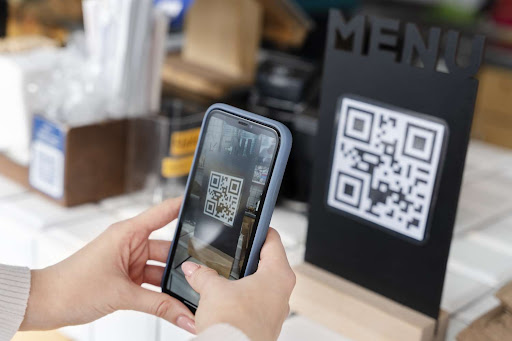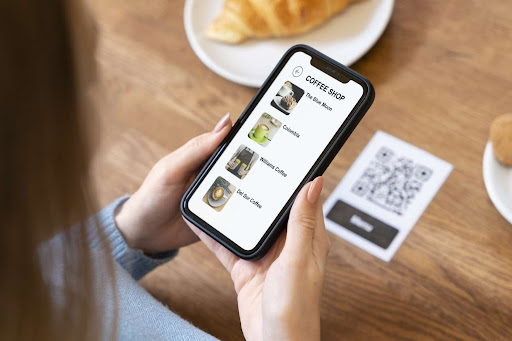:quality(80)/business-review.eu/wp-content/uploads/2023/02/unnamed-2023-02-22T001926.295.jpg)
Have you noticed how more and more businesses go digital, and even those who offer goods and services offline start implementing some elements of omnichannel marketing in their strategy? When you jump in for a minute into your favorite coffee shop, you can once discover specific equipment for ordering beverages and desserts and accepting payment touchless. The insidious terminal will recommend you to try a piece of new cake, and these buns on the screen look so tempting, that there’s vigorously no possibility to avoid honeypots and reject the offer. Such an approach arms stores, shops, cafes, beauty salons, spa centers, and other institutions with the opportunity to increase the average bill and increase revenue respectively.
And if you’re an owner of a private clinic, net of shops, educational center, hotel, and any other vendor of services or retailer, it’s the right time to learn more about how POS software development opens wider perspectives for the business. The Purrweb guys have structured information into several sections, so don’t need more time to find exactly what you’re interested in.
POS-system: what does it mean?
POS is an abbreviation with decipherment as a point-of-sale: the place where the purchase can be committed and the sale is registered.
If you acquire a special terminal and install custom software on it, you receive a working POS system. But what if you’re the owner of a small retail shop? The good news is, nowadays, you don’t need to set up cumbersome hardware when you’re intending to engage your customers in loyalty programs or demonstrate to them some new discounts on assortment. There’s another method to make visitors enjoy the facilities without expensive equipment: to create a mobile app.
In reality, when we’re discussing the nuances of technical realization, there are four types of point-of-sale systems:
- on-premise – specific programs installed on the computers located in the certain restaurant, supermarket or somewhere else;
- cloud based – the program is located on the third-party server and available from anywhere;
- mobile – cloud-based applications available on smartphones, iPhones and tablets;
- self-service kiosks and terminals – specific devices with installed POS software that you have possibly met in the self-service supermarkets, banks or even in modernized general hospitals.
When are POS-systems beneficial for business?
There’s a wide spectrum of tasks that can be resolved by implementing a POS system. Apart from a fast ordering process and payments, it can include some features that
are honed to facilitate various workflows. The variety of opportunities for sellers and buyers depends on the POS software that is used in your case.
When we’re talking about businesses where the point of sales system brings tangible values, we can list almost all niches and specializations.
Retail, Healthcare, Warehouse, Entertainment, Education, Hospitality, and other fields can benefit from implementing custom POS software.
Let’s illustrate how. Suppose you are involved in the Event business. When you’re inviting people to visit a specific exhibition or festival, you have to serve so many people! And this task usually requires a lot of staff in order to complete all the tasks on time. But what if you’ve a mobile app where the potential visitors can learn the show bill, choose one they like, order the tickets, and pay for them? Without any turns, wasted time, and excessive effort?
If you’re an owner of a popular net of pastry shops or coffee houses or any other popular place where people can purchase food/beverages, the POS software will improve the service by reducing wait time: people can order what they want and the staff will see instantly what they’re expected to prepare for delivery.
Regardless of the type of business you run, the point of sales system is honed to streamline all the procedures. And it equips you with access to essential information: daily sales; daily purchases; day-end/month end stock balance; control inventory etc.
Let’s dive into the details of POS software
projecting and development in order to figure out what valuable you can extract from innovations in your case. The first thing to be considered is the set of functions to be provided in the solution.

Features that the POS app can include
Payment services
Since the core mission of the app is to optimize the opportunities for accepting payment, adding tools for executing payment via a bank card or NFC seems to be irreplaceable.
Search bar for goods in your warehouse
If you want to have real-time inventory monitoring, this function will enable the staff with comfortable tracking of items, their balance, disposition etc.
Manage shopping cart content
Buyers would like to see what they have chosen and be armed with an option to add something else or delete definite products. You can provide recommendations of similar or complementary goods in the app.
Barcodes and product tracking
Let your customers save time with fast and easy registration of the goods they have selected and automatic payment.
Integration with CRM and accounting systems
To optimize the management of inventory, and other processes, plug them into the systems of customer relationship management in order to have an all-around statistics /analytics and as a result vision of the economic state of your business.
Personalized offers and perks
Change this sentence to: When you’re planning to conduct a loyalty program, applying coupons, discounts, and some other marketing activities, oversee the opportunity to use QR-code, gift cards, paroles, etc. as well as integration with third-party loyalty platforms in POS software.
Menu with various options
If you’re planning an app for a food-related company arm your customers with the tool to examine a full menu and select eat-in, takeaway pickups, and delivery options.
Collect ratings and reviews from customers
To keep finger on the pulse of the company’s reputation and track real buyers level of satisfaction, add the features that empowers users to give a score to purchases and service, and share their impression with others.
We mentioned only a few options that can be performed in the POS software. The set of features in practice depends on the specific of your business. If we’re describing the app for a restaurant, it will definitely contain such features as table management and tipping and service charge.

5 step guide to build your own POS system
Discussing the project idea with a contractor and getting project estimation
The productive way to figure out which set of features better fits for your tasks is to discuss the project of POS software with the trustworthy team of designers and developers. Try to select a contractor you’d like to cooperate and share your project idea with them. At Purrweb managers can help you articulate the idea and clear up the details and to do the project estimation for free. At this stage, you can ask for help to perform a feature prioritization in order to understand what the minimum is able to provide the app’s viability.
UI/UX Design: creating a clickable prototype
When the project is estimated, the budget and timeline are confirmed, get over to the next task: to visualize an idea. UI/UX designers will make several sketches in order to find out how the app should look. When the example of screens is agreed upon and you are satisfied with their style, they start inventing a whole prototype. If you like how the graphical part of the app looks, the PM hands the UI kit off to IT engineers.
Development: turning the prototype into a working product
The task of the backend team is to bring life into the prototype: make all these buttons and sliders fully functional. The work is usually subdivided into two-week sprints and at the end of each period, you can test a performed piece of functionality.
QA testing
It’s an impropriety to invite people to use the app without checking it for bugs and other drawbacks. The experts in QA will perform l manual testing and automated testing in order to guarantee that the POS software is high fidelity.
Release and maintenance
When the app is launched, it isn’t the final: the product can require some changes or improvements in accordance with real feedback in real exploitation. Oversee that your contractor is ready to fulfill the post-launch support.
Conclusion
The market of POS software is expected to reach $42.5 billion by 2027. This number is three times bigger than in 2018. More and more companies try to modernize their enterprises and optimize sales, inventory, stock counting, etc. And since POS software seems to be a reliable way to cut costs and boost effectiveness, the trend is sustainable.




:quality(80)/business-review.eu/wp-content/uploads/2024/07/Nadia-Comaneci.png)



:quality(80)/business-review.eu/wp-content/uploads/2024/06/22C0420_006.jpg)

:quality(80)/business-review.eu/wp-content/uploads/2024/06/COVER-1-4.jpg)



:quality(50)/business-review.eu/wp-content/uploads/2023/05/software-developer-6521720_960_720.jpg)
:quality(50)/business-review.eu/wp-content/uploads/2019/08/proptechs-real-estate.jpg)
:quality(80)/business-review.eu/wp-content/uploads/2024/06/br-june-2.jpg)
:quality(50)/business-review.eu/wp-content/uploads/2024/07/vodafone-RO.jpg)
:quality(50)/business-review.eu/wp-content/uploads/2024/07/BeFunky-collage-37-scaled.jpg)
:quality(50)/business-review.eu/wp-content/uploads/2024/07/04_ThinkPad_T14s_6_Business_Coworking.jpg)